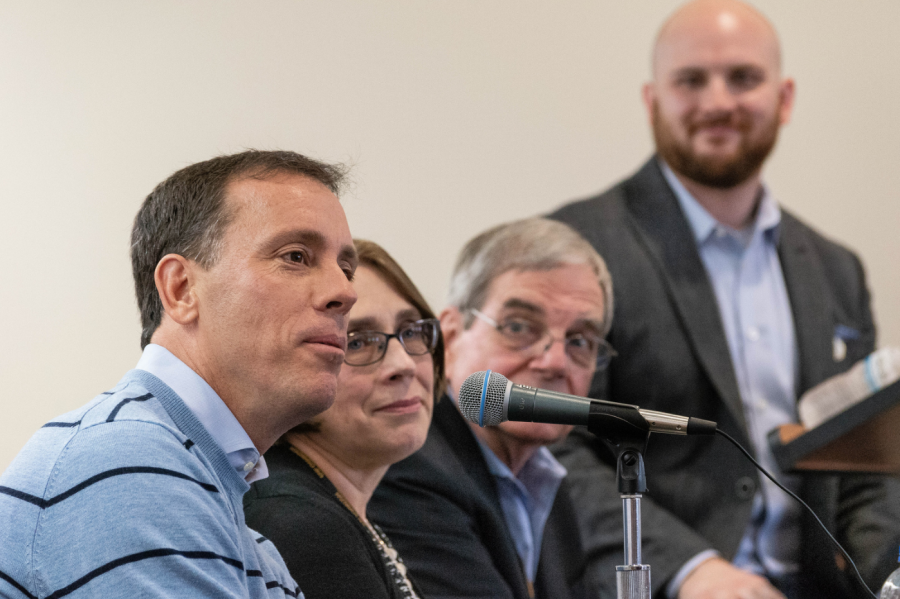Fake news: ‘a cancer on society’
Jim VandeHei, Barbara Benish, Paul Anger and moderator Brody Karmenzind took part in the journalism department’s fake news panel discussion on Friday.
October 25, 2018
The founder of Politico and Axios described fake news as “a cancer on society” that will be difficult to cure.
Jim VandeHei, who graduated from UW Oshkosh in 1995 with a journalism degree and received an honorary doctorate from the University in 2011, was one of the speakers on the Department of Journalism’s 50th Anniversary media panel on Oct. 19. Paul Anger, the retired editor of the Detroit Free Press and Barbara Benish, the Advance-Titan adviser and the internship coordinator for the Journalism Department, were also part of the panel, which was moderated by 2014 alumnus Brody Karmenzind, partner manager at Facebook.
“If you look at polls now, anywhere from 50 to 60 percent of people don’t believe what our industry writes,” VandeHei said. “And that’s a big problem.”
VandeHei said that “fake news” will disappear if four things happen:
— Politicians need to stop using the term “fake news.” Discrediting news sources drives a wedge between the public and the truth.
— News organizations should ban their reporters from sharing their opinions on social media.
— Social media should regulate the flow of disinformation, much like TV stations and newspapers.
— Individuals need to use a variety of trustworthy sources.
Anger, a 1972 alumnus, said, “Real fake news examples would be hoaxes, propaganda, storylines built on demonstrable lies and stories that might be called yellow journalism, ones that seize on a meaningless issue and blow it out of proportion.”
Allegations of fake news and actual fake news stories impact the credibility of news sources and puts journalists under fire. It also distorts the truth and the public’s level of trust in journalists.
VandeHei argued that maintaining a free press is a vital part of a successful democratic society but fake news poses a threat to both. “When you chip away at truth, you really do start to hammer away at democracy,” he said.
Fake news and allegations of it have discredited a number of journalists and news publications, and in many cases, misled the public. Because of this, it is important to educate both future journalists and practicing professionals on how to steer clear of accusations and publish credible stories.
“Students not only need to learn how to report on news fairly, but they also need to know how to consume news and ensure that their media sources are balanced and fair,” said Benish, a 1983 alumna. “We’re living in times of ‘alternative facts’ — so students should be encouraged to consume media from different outlets and then come to their own conclusions if we are to have a well-educated public.”
When it comes to remaining objective Anger said, “If you have a bias, and all of us do, check it at the newsroom door. Perception of bias matters, too, so remember that even in your personal life, you are always representing the First Amendment and freedom of the press.”
Although fake news has tested journalists, Benish argued that it has had a positive impact on the industry, making journalists better reporters.
“I also believe that all too often news is deemed ‘fake’ only because it is unwanted coverage,” Benish said. “More than ever, journalists need to be watchdogs for the public and cover stories that otherwise would not be told.”
“No matter what backlash journalists receive while reporting the truth,” Anger says, “We just need to keep doing our work, guaranteed by the First Amendment, and keep doing it well. Over time, the vast majority of Americans will understand there’s nothing fake about that.”














